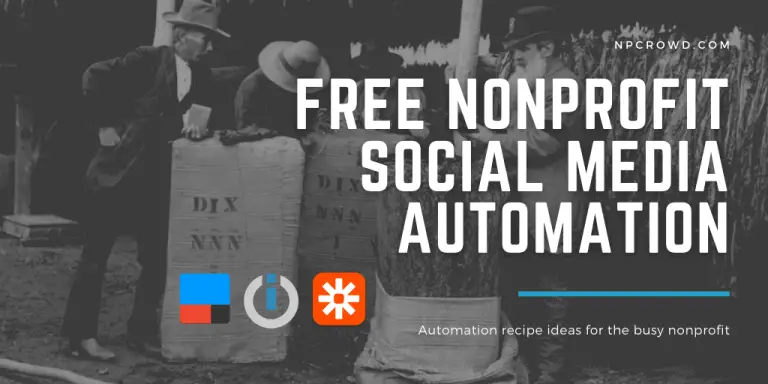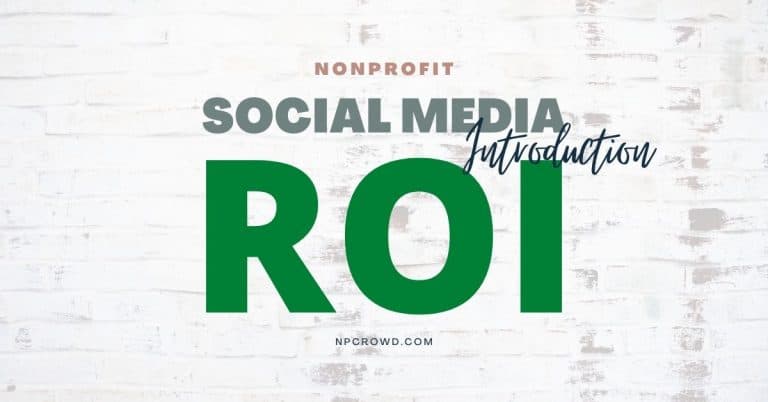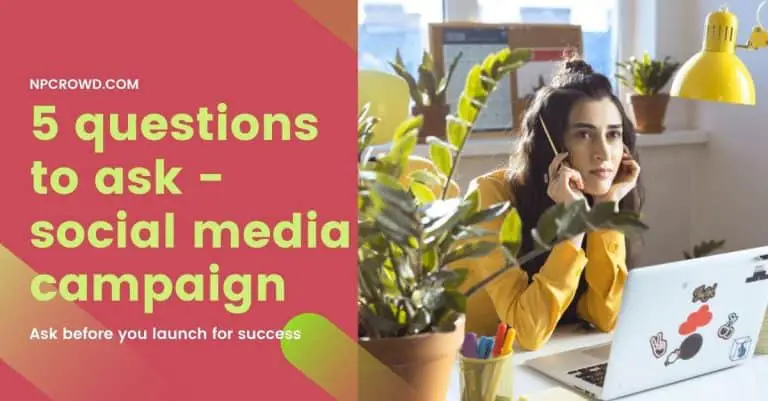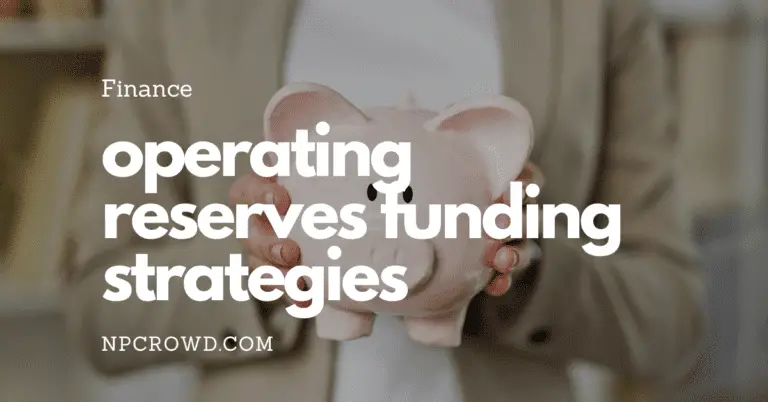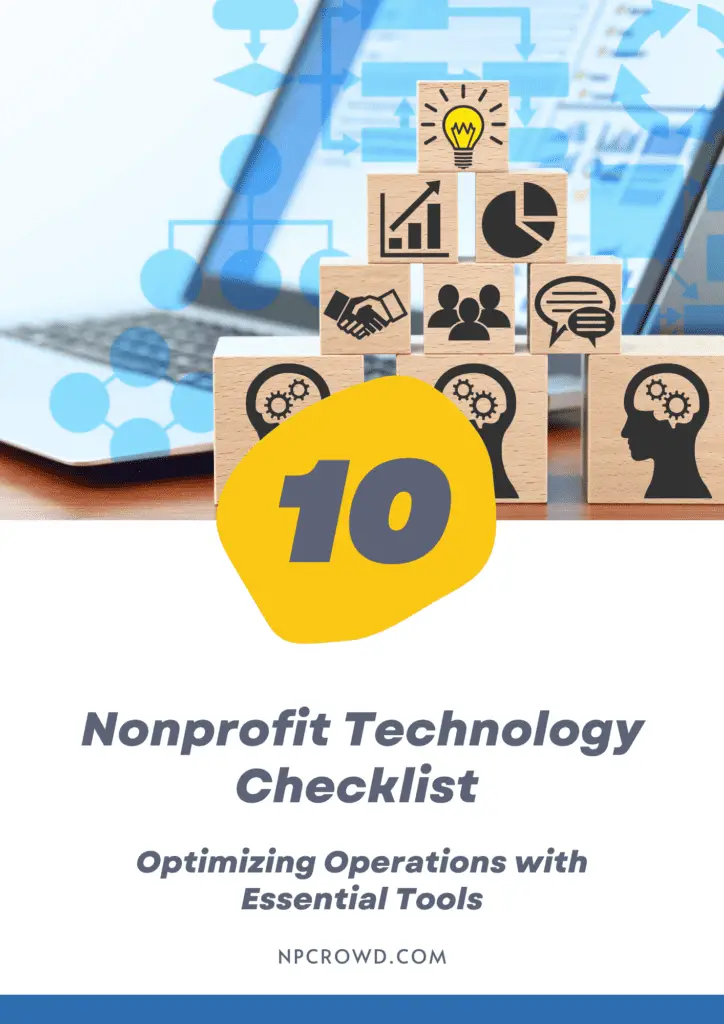Pre-Launch Checklist: Nonprofit Social Media Campaign
Disclaimer: This post may contain affiliate links. These links, if used and purchases made, we may earn a small commission. These affiliate programs do not impact the recommendations we make or the resources we refer you to. Our focus is on providing you the best resources for your nonprofit journey.
Before launching your nonprofit social media campaign, it’s important to have a checklist in place to ensure its success. As a nonprofit organization, your social media campaign plays a crucial role in reaching and engaging your target audience, promoting your cause, and driving impactful results. By following this comprehensive checklist, you can create an effective and well-planned social media campaign for your nonprofit organization.Key Takeaways:
- Having a checklist is essential for a successful nonprofit social media campaign.
- Setting a schedule helps you stay organized and avoid last-minute stress.
- Identifying your campaign target audience allows you to tailor your content effectively.
- Reach out to media outlets for wider coverage and visibility.
- Leverage social media to promote your campaign, using dedicated hashtags and collaborating with influencers.
Set a Schedule
One of the first steps in launching a successful social media campaign is to set a schedule. A well-planned campaign requires proper timing and pacing. By creating a timeline and scheduling specific tasks leading up to the launch, you can ensure that everything is organized and executed efficiently. This will help you avoid any last-minute stress or rushed decisions.
Start by outlining the key milestones and deadlines for your campaign. Consider factors such as content creation, platform selection, audience research, and collaboration with influencers. Group similar tasks together to optimize your workflow and maximize productivity.
Breaking Down Your Campaign Timeline
When creating your campaign timeline, consider the following:
- Pre-Launch Phase: This includes preparing your social media accounts, conducting audience research, and developing your campaign strategy. Allocate sufficient time for these important tasks to set a strong foundation for your campaign.
- Content Creation: Dedicate specific timeframes for generating engaging content, including graphics, videos, copywriting, and blog posts. Keep in mind that high-quality content takes time, so plan accordingly to maintain consistency and build anticipation.
- Platform Selection: Research and decide which social media platforms will best reach your target audience. Each platform has different features and user demographics, so choose wisely and allocate time for account setup and optimization.
- Collaboration: If you plan to collaborate with influencers or partner organizations, schedule time for outreach, negotiations, and content co-creation.
- Monitoring and Analytics: Allocate time to monitor your campaign’s performance, track engagement, and analyze data. This will help you assess the effectiveness of your campaign and make necessary adjustments.
Remember to be realistic when setting deadlines and consider potential unforeseen obstacles. Flexibility is crucial throughout the campaign, allowing you to adapt to any changes or challenges that may arise.
“A well-planned campaign timeline sets the rhythm for your social media campaign, providing structure and organization to ensure an effective launch.” – Social Media Strategist
By establishing a comprehensive timeline, you can effectively manage your social media campaign planning and ensure that each task is completed on time. This will ultimately contribute to a successful campaign that engages your target audience and achieves your nonprofit organization’s goals.

Identify Your Campaign Target Audience
Before launching your social media campaign, it is crucial to identify your target audience. Understanding who you want to reach and connect with will enable you to tailor your message and content to resonate with them effectively. Demographic information such as age, gender, location, and income can provide valuable insights into the characteristics of your target audience.
Dig deeper by analyzing their interests, values, and behaviors to gain a comprehensive understanding of what motivates them. This information will help you create content that not only grabs their attention but also connects with them on a deeper level.
“Knowing your audience is the key to creating impactful content that resonates with them.”
For example, if your nonprofit organization focuses on environmental issues, your target audience might consist of environmentally conscious individuals who are passionate about sustainability. By crafting content that not only educates but also inspires action, you can cultivate a strong connection with your audience and drive meaningful engagement.
Additionally, consider leveraging social media analytics to gather insights about your audience. Platforms like Facebook and Instagram provide valuable demographic and behavioral data that can inform your campaign strategy.
Remember, your target audience should not be a broad and generic group. Instead, try to segment your audience into specific demographics and interest categories. This will allow you to create highly targeted content that resonates with each segment individually.
Examples of Target Audience Segmentation
| Segment | Demographic | Interests |
|---|---|---|
| Young Professionals | Age: 25-35 Gender: Both Location: Urban areas |
Social justice, career development, personal growth |
| Parents | Age: 30-45 Gender: Both Location: Suburban areas |
Family, education, health, parenting |
| Seniors | Age: 55+ Gender: Both Location: Retirement communities |
Volunteering, health and wellness, lifelong learning |
By segmenting your target audience and tailoring your content to each segment’s specific interests and values, you can create a more personalized and impactful social media campaign.

Reach Out to Media Outlets for PR
Publicity is crucial for the success of any nonprofit social media campaign. Before launching your campaign, it’s important to reach out to media outlets such as newspapers, TV shows, and radio stations. These platforms have a wide audience and can help spread the word about your campaign to a larger community. By getting media coverage, you can raise awareness for your cause and drive more support and engagement.
When contacting media outlets, it’s essential to provide them with a comprehensive press kit. A press kit is a collection of materials that journalists and reporters can use to write about your campaign. It typically includes information about your organization, key campaign messages, images or videos, and any relevant statistics or data. Creating a well-organized and visually appealing press kit will make it easier for media outlets to cover your campaign accurately.
“Getting media coverage is like having a megaphone for your nonprofit. It amplifies your message and helps you connect with a larger audience.”
Here are a few key elements to include in your press kit:
- A brief overview of your nonprofit organization and its mission
- Key facts and statistics about the issue your campaign addresses
- A compelling story that showcases the impact of your work
- Quotes from key individuals involved in the campaign
- High-resolution images or videos that accurately represent your campaign
- Testimonials or success stories from people who have been positively impacted by your nonprofit
Press Kit Example:
| Document | Description |
|---|---|
| Press Release | A document announcing the launch of your campaign, including key details and quotes from your nonprofit’s representatives. |
| Fact Sheet | A concise summary of your campaign’s objectives, target audience, and expected outcomes. |
| Biographies | Brief profiles of your nonprofit’s key team members or spokespeople, highlighting their expertise and involvement in the campaign. |
| High-Resolution Images | Professional-quality photos or graphics that effectively convey your campaign’s message and visuals. |
| Media Contacts | Provide the names, email addresses, and phone numbers of the individuals responsible for media inquiries, interviews, and follow-ups. |

Leverage Social Media for Your Campaign
Social media plays a vital role in the success of your nonprofit social media campaign. By implementing an effective social media marketing strategy, you can amplify your campaign’s reach and engagement. One key tactic is to create dedicated hashtags for your campaign. These hashtags help increase visibility and make it easier for your audience to find and engage with your content.
Collaborating with influencers in your target audience is another valuable strategy. Influencers have established credibility and a loyal following, making them powerful advocates for your campaign. Partnering with influencers who align with your mission and values can amplify your message and attract new supporters to your cause.
In addition to organic reach, consider using paid ads on social media platforms to expand your campaign’s visibility. Paid ads allow you to target specific demographics and increase the reach of your message beyond your existing followers. To ensure the effectiveness of your campaign, regularly monitor and analyze the success metrics on social media. This data will provide insights into what strategies are resonating with your audience and allow you to optimize your efforts accordingly.
By leveraging social media in your nonprofit social media campaign, utilizing dedicated hashtags, partnering with influencers, and strategically utilizing paid ads, you can maximize your campaign’s impact and connect with a wider audience. Stay engaged with your followers, respond to comments, and track your campaign’s progress to continually refine your approach and drive meaningful results for your nonprofit organization.
FAQ
What should be included in a pre-launch checklist for a nonprofit social media campaign?
A pre-launch checklist for a nonprofit social media campaign should include setting a schedule, identifying the target audience, reaching out to media outlets for publicity, and leveraging social media effectively.
Why is setting a schedule important before launching a social media campaign?
Setting a schedule for a social media campaign helps ensure proper timing and pacing, allowing for organized and efficient execution. It helps to avoid last-minute stress and rushed decisions.
How can I identify my target audience for a social media campaign?
To identify your target audience, consider demographic information as well as their interests and values. This information will help tailor the campaign’s message and content to resonate effectively with the desired audience.
How can I reach out to media outlets for PR before launching my social media campaign?
Before launching the social media campaign, reach out to media outlets such as newspapers, TV shows, and radio stations. Provide them with a press kit and any necessary information to make it easy for them to cover your campaign.
How can I leverage social media for my nonprofit campaign?
Leverage social media for your campaign by creating dedicated hashtags, using influencers in your target audience, and considering paid ads to expand your campaign’s reach. It is essential to monitor and assess the effectiveness of your campaign on social media.

